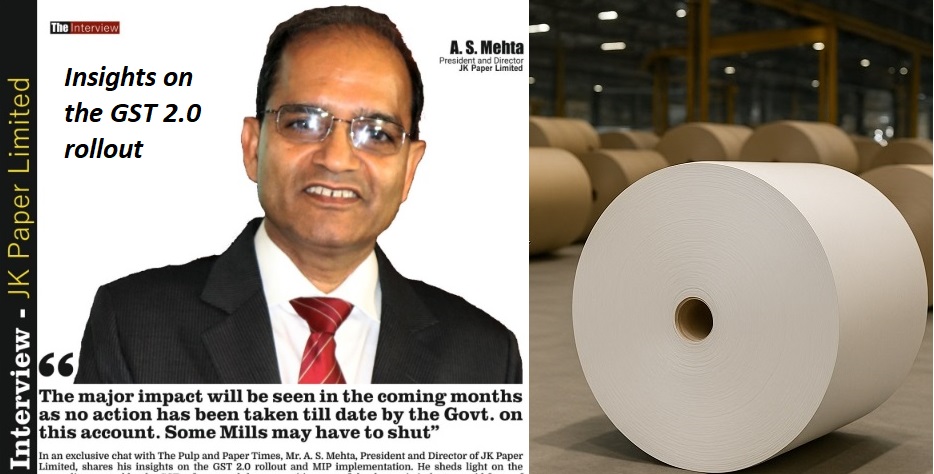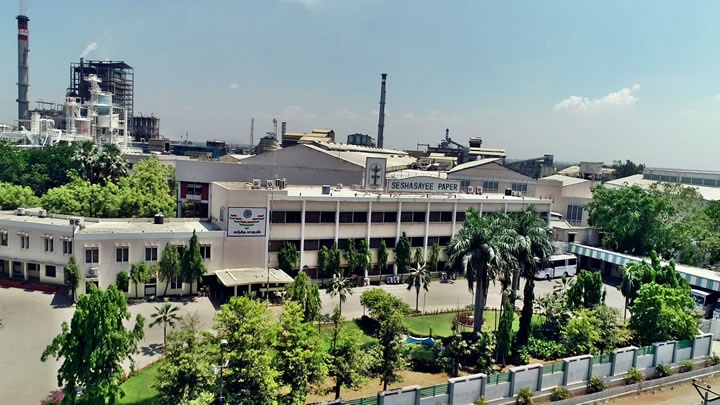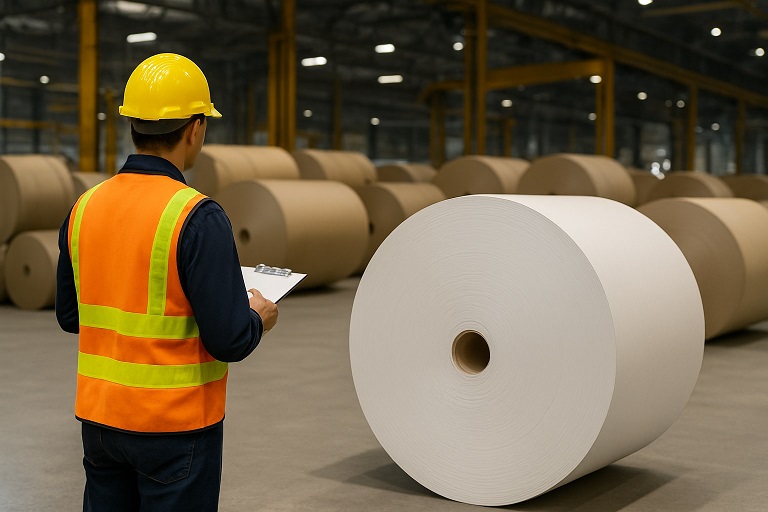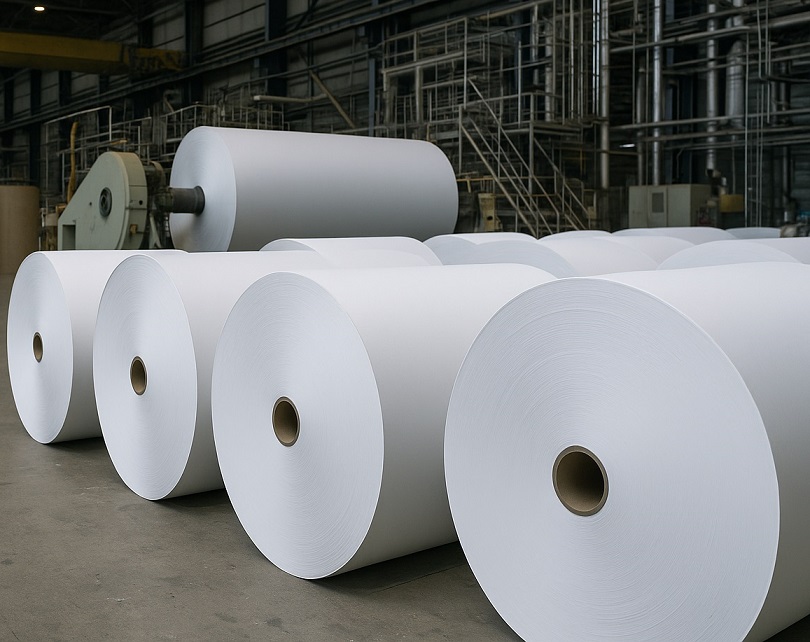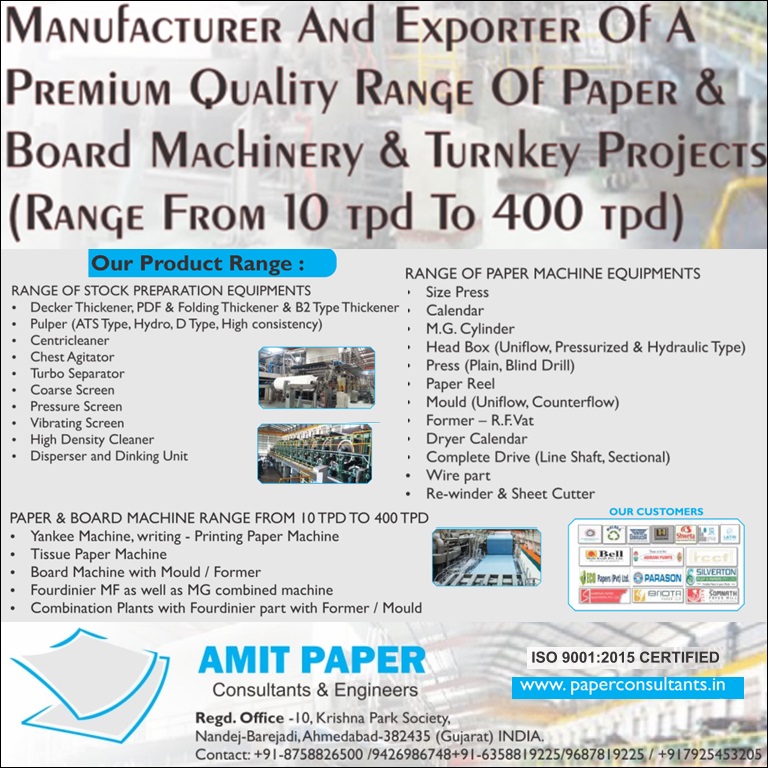Accumulated paper inventory at a few mills hinders potential price hikes; prices are likely to remain under pressure
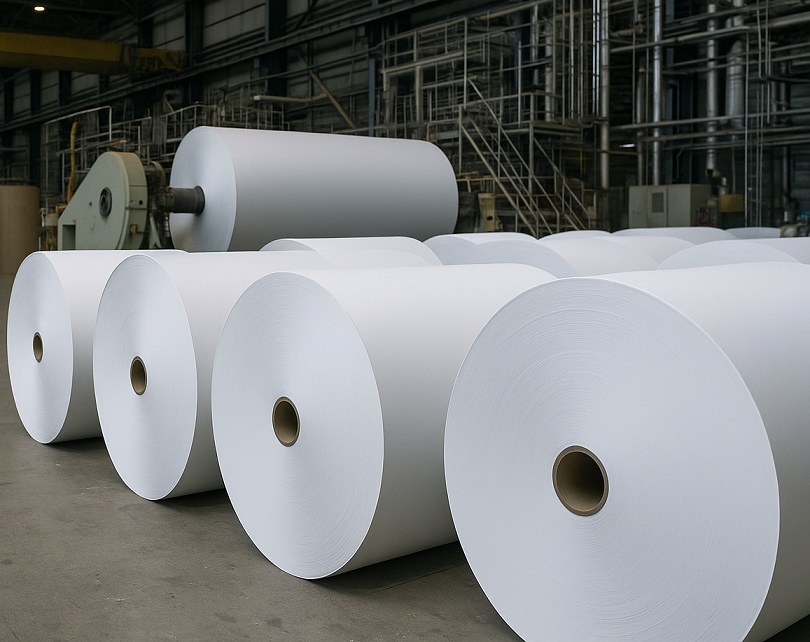
Accumulated paper inventory at a few mills hinders potential price hikes; prices are likely to remain under pressure
- The below report has been extracted from the speech of Mr. N GOPALARATNAM, CHAIRMAN, Seshasayee Paper and Boards Limited, who was speaking at 65th Annual General Meeting
- With strategic investments in raw material security, circular economy practices, and advanced manufacturing, Paper Industry is expected to grow at a CAGR of 5-6% over the next decade.
The Pulp and Paper Times
The Indian paper industry plays a vital role in the nation’s economic development and is intricately linked to sectors such as education, packaging, FMCG, and publishing. Currently, the industry is valued at over INR 80,000 crores, with a production capacity of approximately 25 million tonnes per annum. It supports over half a million people directly and many more indirectly. India is both a producer and consumer of paper, ranking among the top 5 paper-producing countries in the world.
Despite global hurdles, the Indian paper industry is poised for steady growth:
Rising Literacy and Education Reforms: Government initiatives such as the National Education Policy (NEP) will drive demand for educational Page 11 materials.
Boom in E-commerce and Food Delivery: Demand for eco-friendly packaging solutions, including kraft paper and carton boards, is increasing rapidly.
Sustainability and Bioeconomy Push: There is a growing shift toward using paper as a substitute for plastic in packaging and single-use products.
Technological Modernization: Adoption of automation, digitization, Artificial Intelligence and Machine Learning applications and energy efficient processes is making Indian mills globally competitive.
Exports Potential: With rising global awareness about sustainable paper packaging, India is well-positioned to become a preferred export hub, especially to the Middle East and Africa.
The Indian paper industry is undergoing a transformation from a traditional manufacturing sector to a dynamic, tech-enabled, and sustainability-driven industry. With strategic investments in raw material security, circular economy practices, and advanced manufacturing, it is expected to grow at a CAGR of 5-6% over the next decade. Its ability to align with global trends like eco-friendly packaging and digital integration will determine its long-term success and resilience.
However, in the short to medium term, the situation, particularly on margins and returns for the Paper Industry is not positive.
The adverse market conditions seen in FY24 for most varieties / grades of Writing & Printing (W&P) continued in FY25 and further worsened more particularly in 2nd half of FY25, amidst global uncertainties, weak demand and sustained higher inflow of Cheaper imported paper into India.
The Domestic Paper market continues to remain weak amidst:
(i) Disrupted supply chains globally due to the tariffs announced by US
(ii) Increased availability of Imported Paper from China, Indonesia and other Asian countries, at Cheaper Prices in the Indian market.
(iii) The overall unfavourable global demand situation resulting in increased supply situation to the Indian Market, thereby resulting in Demand -Supply mismatch.
The above factors contributed to significant reduction in the prices of Paper during the year. Though the company / most paper mills could announce price increase in Jan’25 and Feb’25, the said could not be implemented in the market due to aggressive dilution of accumulated paper inventory by few paper mills at disruptive prices.
The International market for Paper, which remained extremely buoyant until FY23, had seen severe pricing pressures over last 8-10 quarters. The International market has not shown any signs of recovery and the drop in price mainly from Indonesia and China continue. Demand remains flat although some short-term bumps are seen. The company’s supplies in to US Market remained strong during FY25; however, this has been affected in Q-1 of FY26 with steep tariff announcements by US.
On the cost front, the Indian Paper Mills with integrated pulping operations, suffered significantly due to exorbitant increase in the cost of wood. The price of Wood continues to remain at these elevated levels, due to availability issues, with impact being more profoundly felt by the Paper Mills in the State of Tamilnadu.
Imports:
Imports of paper and paperboard in India, in volume terms have jumped from 11.45 lakh MT in 2021-22 to 14.36 lakh MT in 2022-23 to 20.55 lakh MT in 2024-25, according to the latest data issued by the Directorate General of Commercial Intelligence & Statistics (DGCI&S). This translates to an increase of nearly 80% in 3 years by volume terms. Imports from China have increased a stupendous 277 % during the past 3 years, and from ASEAN countries by 180 % during the last 3 years. Suitable safeguard, anti-dumping and countervailing duties on imports of various grades of paper should be expeditiously imposed.
Wood
India’s Pulp & Paper Industry has agro forestry roots and strong backward linkages with the farming community, from whom wood, which is a key raw material, is sourced. Of the total demand for wood, over 90% is sourced from industry driven agro / farm forestry, rest from government and other sources. India’s Paper Industry is wood-positive, that is, it plants more trees than it harvests.
Industry promoted tree farming programmes have generated significant employment opportunities for the local community, especially in the rural areas, apart from increasing the green cover in the country. However, lack of adequate land has been a major constraint in enhancing wood production by the Industry.
DEMAND OUTLOOK
1) Domestic market conditions are expected to remain challenging at-least until the first 2 quarters of the FY26 for W&P grades, as per the present market trends.
2) The demand for paper and more particularly, the market operating prices will depend on the Global macro-economic trends and swift closure of trade agreements between India and US in resolving the tariff situation.
3) As sweeping tariffs have been imposed on India's competitors including China, Thailand, Vietnam and Malaysia, their goods become expensive in the US market and this would lead to diversion of goods into countries like India after some months. The clear signals for these rises in imports are likely to manifest from June to July.
4) With fear of possible recession / lower than expected growth levels in some of the key economies and distressing global political situations, prices of Paper is expected to see continued pressures in the short medium term. Considering the uncertainties that continue to prevail in global macroeconomic situation and subsequent slowdown in developing countries, the market is expected to be very cautious and seek for replenishment of inventory only when necessary without room for any speculation.
5) The Export market for Uncoated Wood Free grades has been under pressure both in terms of demand and prices over the last 8-10 quarters and this trend is expected to continue.
The above report has been extracted from the speech of Mr. N GOPALARATNAM, CHAIRMAN Seshasayee Paper and Boards Limited, who was speaking at 65th Annual General Meeting
Web Title: Accumulated paper inventory at a few mills hinders potential price hikes; prices are likely to remain under pressure





 Join WhatsApp Group
Join WhatsApp Group Join Telegram Channel
Join Telegram Channel Join YouTube Channel
Join YouTube Channel Join Job Channel (View | Submit Jobs)
Join Job Channel (View | Submit Jobs) Join Buy Sell Channel (Free to Submit)
Join Buy Sell Channel (Free to Submit) Paper News Headlines Channel (Free to read)
Paper News Headlines Channel (Free to read)





